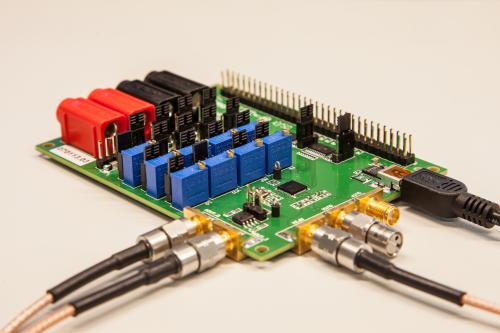
San Francisco, USA (ISSCC 2013, International Solid State Circuits Conference) – February 22, 2013 – Imec and Holst Centre presented at ISSCC an ultra-low power multi-standard 2.3/2.4GHz short range radio. The 1.9nJ/b radio is compliant with three wireless standards: Bluetooth ® Low Energy (BLE), ZigBee (IEEE802.15.4) and Medical Body Area Networks (MBAN, IEEE802.15.6). A proprietary 2Mbps mode is also implemented to support data-streaming applications like hearing aids. The radio is 3-5 times more power-efficient than current Bluetooth Low Energy solutions.
“From health care to smart buildings, adding sensors to our environment will support and enhance our day-to-day life. Applications are numerous and restricted mainly by our imagination… and by the power consumption of the mostly battery-operated sensor devices,” said Harmke De Groot, Program Director Ultra Low Power Circuits at Holst Centre/imec. “The radio often consumes between 50-85% of the overall power consumption of a sensor system. And for autonomous devices, with only a small battery and thus limited battery energy, the power consumption of commercially available short-range radios is rather high (>15mW DC power).”
Imec and Holst Centre developed an ultra-low power multi-standard radio with state-of-the-art sensitivity. The radio significantly reduces the power consumption of the overall sensor system compared to off-the-shelf radios. As a result, the autonomy of the device is increased, or more functionality can be added to the sensor device, increasing its quality, functionality and/or performance. Or, the battery size can be reduced, resulting in a smaller device, which in case of wearable systems, adds to the comfort of the user.
The 2.4GHz radio is implemented in 90nm CMOS technology. Using a highly energy efficient architecture and optimizing the most power hungry building blocks, resulted in a 2.4GHz radio with world-class energy efficiency while supporting the most common standards for mobile sensor networks (BLE®, ZigBee ® and IEEE802.15.6). Imec and Holst Centre's energy-efficient radio architecture has a suitable LO frequency plan and several efficiency-enhancement techniques for the critical RF circuits. As a result, the radio achieves a DC power of only 3.8mW at 1.2V supply for the receiver and 4.6mW for the transmitter. This is 3 to 5 times more power-efficient than the current state-of-the-art Bluetooth Low Energy solutions. The measured RX noise figure is 6dB, resulting in an excellent sensitivity in each standard (-100/-98/-96.5dBm for Zigbee/BLE/MBAN). With a measured IIP3 of -19dBm at the maximum front-end gain, the RX can accommodate the BLE intermodulation test level to -40dBm (spec. >-50dBm).
These results were presented at the 2013 IEEE International Solid-State Circuits Conference (ISSCC) in San Francisco (February 17-21, 2013). |
| Acerca de esta empresa: |
Imec performs world-leading research in nano-electronics. Imec leverages its scientific knowledge with the innovative power of its global partnerships in ICT, healthcare and energy. Imec delivers industry-relevant technology solutions. In a unique high-tech environment, its international top talent is committed to providing the building blocks for a better life in a sustainable society.
Imec is headquartered in Leuven, Belgium, and has offices in Belgium, the Netherlands, Taiwan, US, China and Japan. Its staff of about 1,900 people includes more than 500 industrial residents and guest researchers. In 2010, imec's revenue (P&L) was 285 million euro. |
| Empresa: |
| Nombre de la empresa: |
IMEC International |
| dirección: |
Kapeldreef 75 |
| ciudad: |
Leuven |
| provincia: |
|
| ZIP: |
B 3001 |
| país: |
Belgium |
| número de teléfono: |
+32-16-281552 |
| FAX: |
+32-16-281779 |
 |
 |
|